Time is one of those lifelong skills that we have the honor of teaching. It's something that we use all day, every day, and is necessary to be successful in life. The art of telling time on an analog clock can easily become extinct with all of today's technology and digital options. So, it's up to us to continue teaching our students how to tell time on every clock available. Here are some fun activities to teach telling time in your classroom.
Telling Time
Telling time is first introduced in Kindergarten and First Grade.
These young students are taught about the hour hand and minute hand, so they should be familiar with a clock and its parts by the time they get to you.
It's our job to expand on this concept and teach them about telling time to the hour, half-hour, quarter-hour, and 5 minutes.
There are many different ways to teach this and tons of activities you can incorporate to make learning fun and engaging.
It's also important to remember to differentiate your activities and strategy. Students will be on all different levels with this skill, so you need to make sure you are reaching all of them.
Here are some fun activities to teach telling time that I use in my classroom.
Fun Activities to Teach Telling Time
Activate Prior Knowledge
Before introducing anything new, I review what students have been taught in previous years. Not only does this help me identify any learning gaps, but it also makes sure that we have a common starting place.
We start by discussing the hour hand and the minute hand and how they are similar and different. This helps to make sure that students know and understand the vocabulary that we will be using in our telling time unit. Then we jump right in with some review. I run off pictures of analog and digital clocks on bright-colored card stock to help with this. We then use these cards in many ways to review telling time skills that students should already be aware of.
One of my favorite activities with these cards is a movement match-up game. Each student gets either a clock card or a time card. Then I set the timer and they have 1 minute to find their match. At the end of each round, I do a quick check to make sure students are correctly matched. Then I have them switch cards with someone in the room. If they had a time card, they switch with a clock card and vice versa. This makes sure that students practice both reading the time and reading the clock. We play a few rounds of this game. If the class is doing really well I might even challenge them to match up in less than one minute.
Another favorite activity with these cards is playing an old-fashioned game of Concentration. This is the perfect game to add to small groups and centers. Since the cards are already made, it is super easy to set up too! It is a fantastic way to review.
Pre-Test
I love to give pre-tests before beginning any unit. It's a great way to assess where my students are, identify any holes and correct any misunderstandings. I use this information to plan my lessons and guide my instruction. It allows me to see what areas I really need to focus on and which areas they have already mastered.
While I will always cover all the skills, some years we may move more quickly in a review style and other years the same concepts require more instruction.
Plus, it's always fun to see how much they've grown at the end of the unit. Having a solid pre-assessment is such a great way to collect data on skills and truly see what skills they have learned and mastered.
Let the Learning Begin
I love to use anchor charts as visual representations of vocabulary words and concepts that we will be learning. These anchor charts give students important language, definitions, and an image to refer to. During any given unit, our anchor charts remain posted in the class.
The anchor charts serve as great reference tools for my students to use throughout the unit. Sometimes I run them off for the students to have a copy in their notebooks. By giving students this reference tool, we are setting them up for success. Not only do they have a tool to refer back to when they need a reminder, but we are also teaching them to take ownership of their learning. Learning to find the answer instead of asking for the answer is an important skill they will use for the rest of their lives.
After introducing a skill we move right into practice. I love to use the I do, we do, you do approach in my lessons. I begin by modeling and talking through my thinking. Then we do some practice together. During this step, I transition from explaining what I'm doing to asking questions to allow students to explain their thinking. Then we finish up with students working independently.
Practice, Practice, Practice
This is where the magic happens. Telling time is one of those skills that requires a ton of practice to master the skills. I like to start slow and work on one skill at a time. By doing this students can build on their previous learning and success to help them with new skills.
Practice activities take many different forms. I like to keep our practice time feeling fresh so I mix it up by having my students work independently, with a partner, and in small groups. We also do a variety of activities from hands-on sorting activities to games to practice worksheets. It's this variety that really helps to reach the learning styles of all the students.
Once we have practiced one skill, then we start the process again with the next skill. It's a little like this: Introduce, I Do, We Do, You Do, Repeat!
Craftivity
Our telling time unit is not complete without this fun and interactive craft. This is my favorite of the fun activities to teach telling time, and the students love it too!
Each student gets to create their own watch! This is something really special for them because most of my students don't have their own watch. The kids really get into it!
I just run the watch pieces off on construction paper or colored cardstock to make them a little more durable. The kids cut out the pieces and put together their own watch. I also let them personalize their watch band so that each one takes on its own personality.
They love having their own watch to practice telling time on. I use the watch activity to review before we take our post-test. During our telling time unit, students will keep their watches on their desks. At random times throughout the day, I will say something like "it is 10:15. Please show me that time on your watch." Students will then manipulate their watch to show the time and hold it up.
They really love the randomness of when I call out these times. And sometimes, just for some giggles, I might say something like "it is . . . {long pause} . . . writing time." There are usually lots of giggles as students were so sure they would be grabbing their watch.
However, you use them, this hands-on, interactive craft is a great way to get students working with time.
Post-Test
When we have finished all of our telling time concepts, it is time to wrap up the unit with an assessment. I usually give them the same test again that I used for the pre-test. This way it is an apples-to-apples comparison. You can really see their growth when comparing the two. I take the time to give my students each of their tests and let them see how far they've come as well. They really get into this, and it does wonders for their self-confidence.
Save Time Teaching Telling Time
I hope you'll try these fun activities to teach telling time. I've pulled all my favorite teaching tools, activities, and more into this Telling Time unit. If you'd like to save time, then you'll want to check out my Telling Time resource. It includes everything you need to teach telling time to the hour, half-hour, quarter-hour, and 5 minutes. You'll love all of the math activities and games included in the resource. It's great for 1st-3rd grade because you can use it as an introduction, to teach the lesson, and as a spiral review.
Save it for Later
Be sure to save this pin to your favorite math Pinterest board. These fun activities to teach telling time are sure to be a class favorite. Helping you save time with one unit to teach about time is just...



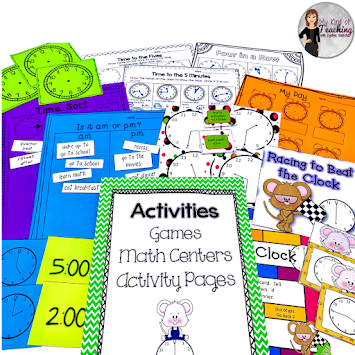

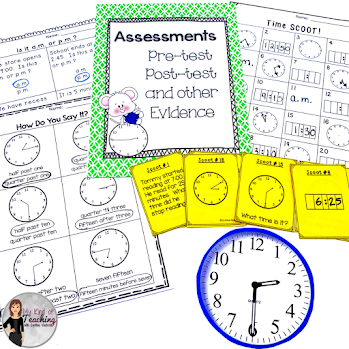

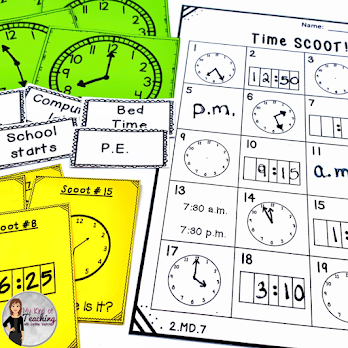
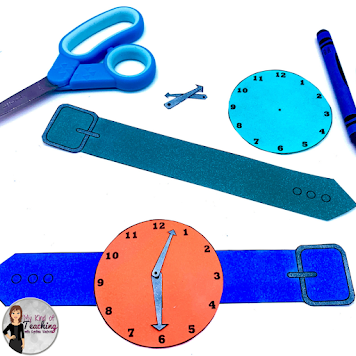
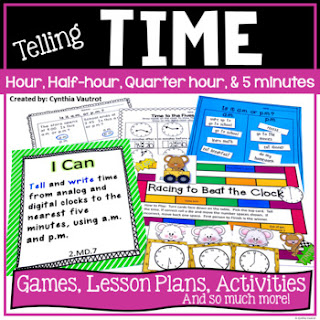

I love teaching that each hour has a "room". This helps students understand what the hour hand represents. (Most students get the minutes pretty well, but have trouble determining the hour.)
ReplyDeleteNeat! Whatever works, right? Thanks for taking time to read this post about telling time!
ReplyDeleteThis is a great post and comes at a perfect time. We are working on elapsed time in upper grades and they are struggling because many of them do not have a solid foundation for telling time using a clock. I have had to back up to work on those skills. I actually pulled out my old Judy clock. Some remembered and some did not, so we started there. Sometimes I think having all the digital watches (and clocks) make us lazy and we forget how to do it the "old fashioned way". LOL I agree that the students get very confused with the hour and minute hands, so I think these strategies are fantastic! Anchor charts are very helpful and it teaches the student to be more independent in their learning.
ReplyDeleteThank you for this post!
I have found the same difficulties in upper grades. Giving a firm foundation for telling time is so important!
DeleteThanks for stopping by!
Thanks for the great ideas!
ReplyDelete